In this nostalgia corner I thought I would collect together notes on some of the radio kit that I have messed with over the years, (the pictures have been shamelessly stolen from elsewhere on the web).
Receivers
In the late 1960s and 1970s I had transistor radio I used to listen to Radio Caroline and Radio North Sea International on, (usually under the bedclothes when I should have been sleeping on a school night). At secondary school, marvelling at the 19 set in the CCF room, I resolved to build a shortwave radio receiver with my pocket money.
The HAC One valve receiver

This strange beast above is what I ended up with. A regenerative receiver, it had a single valve and was powered by a 90V dry cell battery. (In the early 1970s, you could still get such a thing as a 90V battery). It was a big square thing as I recall about the size of a jar of marmalade – the battery not the radio. I guess anyone running this receiver now has to buy 10 x 9V batteries and wire them in series (!) It lived in a cupboard in my bedroom and had a wire antenna I put in the attic.
My recollection is you plugged in high impedance headphone around the back and the left hand knob was the volume control, the right hand was the tuning. It came with a set of plug in coils and you changed the coils for each frequency band you wanted to listen to. In theory you could resolve SSB and CW by fiddling with the regen control in the middle, but my recollection was mainly listening to shortwave broadcast stations.
The Marconi CR100 receiver

I obtained this WW2 receiver during this period as well. A large and imposing piece of equipment I had some good results with it once I had cleaned up all the band change switches. It seemed to perform best at LF with MSF from Rugby at 60kHz being particularly strong but the performance in the higher hf bands was not what it had been. The truth be told, getting it to work properly was beyond my rudimentary skills. 🙁
The Yaesu FRG7 Receiver
A job working at the Gordano Valley Service Area on the M5 fnanced the replacement of the CR100 with a modern (in 1976) receiver the Yauesu FRG7.
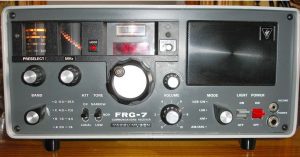
The FRG-7 was a double conversion superhet receiver incorporating a wadley loop for stability. Interesting technology for the time that had also been used in some RACAL receivers I think.
For Wadley Loop fans, refer to:
With the FRG-7 it was much easier to copy amateur stations from around the world. I was encouraged to study for and get my Amateur Radio Licence in 1977.
Time to transmit my own signals.
Transmitters
I remember being impressed by a friends station who was active on 160m (top-band) 10W AM with an enormous wire antenna in a very long garden. I didn’t have access to such space and besides hadn’t managed to pass my 12 words a minute CW (Morse) test. (In those days I would have had to go along to Portishead radio, no less, to be examined) So my licence, G8PQH, was consequently only useful on VHF and above.
The Belcom Liner 2 SSB Transceiver
In the late 70s a lot of local activity was moving from topband to the 144-146MHz, 2 metre band. Because of FM repeaters, but also because of the increasing availability of commercial equipment. I was one of the many operators at the time who got hold of the infamous Liner 2 SSB transceiver for the 2m amateur band.
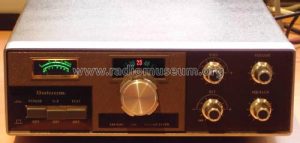
Heres a picture of the front of the Liner 2

and a Liner 2 with the top cover off!
A radio with a very dodgy reputation for spurious transmissions, particularly if someone had turned the drive up to try and get the claimed 10W out of it. Its circuity seemed to be based on a 28MHz SSB CB rig with another conversion stage added as a downconvertor from 144MHz. Lots of crystals. It tuned in 10kHz steps with an RIT control.
I left home to join GEC Telecommunications Ltd as a student apprentice and the Liner 2 came with me. I operated from their hostel at the Telephone Works site in Coventry, “The Grange” with an 8 element beam antenna and a rotator lashed to the chimney. In those days there was considerable amount of activity on 144.300MHz SSB and contacts were made across the Uk and into Europe fairly easily even at low power.
Strange what sticks in the mind, I remember my dad driving me over to Cowplain in Hampshire to buy this rig from a fellow enthusiast, but strangely I don’t remember getting rid of it, or parting with the others, for that matter.
The Icom IC202 SSB Transceiver
Actual working for a living full time, as opposed to Saturday jobs enabled the Liner 2 to be swapped for an ICOM 202 2m SSB rig. Unlike many other bits of kit I have owned this one is a classic and they are often still seen today as IF rigs used by microwave enthusiasts. Much better RF performance but kind of minimalist in terms of bells and whistles.
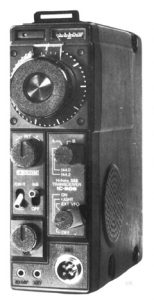
The FDK Palm II
To join in on local repeaters in the West Midlands I rather dimly bought this less than wonderful 6 channel handheld on HP. An ICOM 2E would have been a much better bet. I guess that was a more expensive choice.

Wood and Douglas kit/homebrew 2m FM
Later I assembled my own 2m FM base station transceiver from a kit of parts form Wood and Douglas. In addition tio the tx and rx boards shown here it had a frequency synthesiser (wow) that was controlled by a set of thumbwheel switches and the whole thing fitted into a Maplin Electronics metal box.
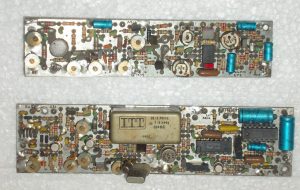
The Yaesu FT290
Whilst at university in London the IC202 gave way to another rig which you still see around 40 years later, the Yaesu FT290R. Like the ICOM it had some idea of being a portable radio, both could house alkaline D cells inside and came equipped with a telescopic whip antenna as well as a conventional SO239 on the rear (or maybe the bottom)
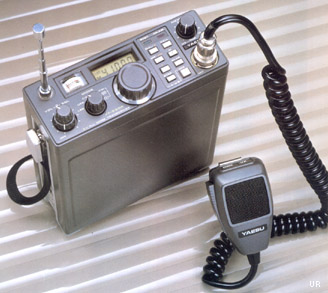
This could do FM and SSB/CW on the 2m band and came with a digital display. It synthesised VFO gave tuning down to 100Hz steps.
G5YC and all
Whilst at college I joined the Imperial College Amateur Radio Society (HAMSOC) G5YC although I was never a particularly active member. In those days the club was quite active particularly in contests and had a shack and antennas on the roof of the Electrical Engineering Building.
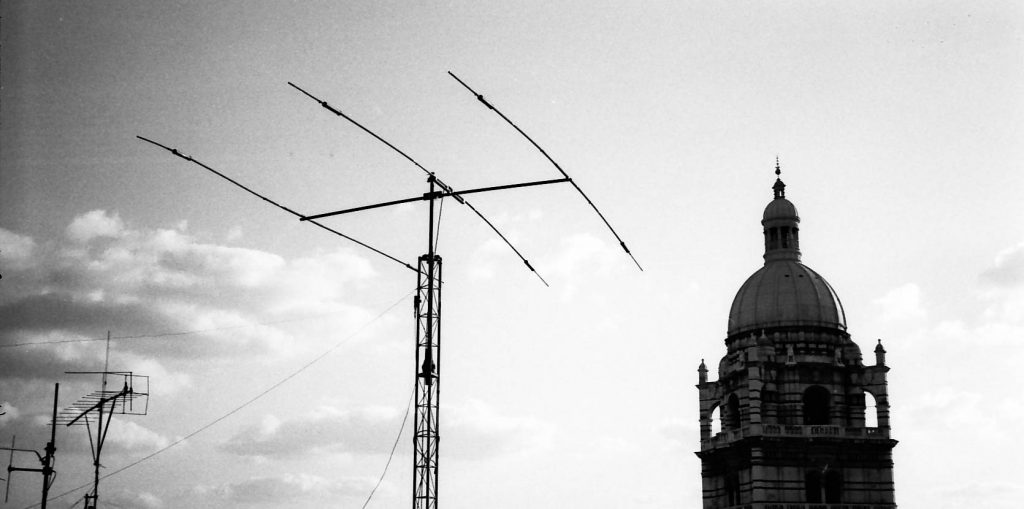
Russell G4CTP put some pictures on flickr from 1979 which are just as I remember it.
Russells G4CTP pictures of G5YC from 1979
There was a chunky MLA2500 Linear amplifier and a Drave TR4 Tx and Rx combination. In one of the pictures Russell is shown with the 444 mic in hand. The shack got moved off the roof of Elec Eng to the students union building. (In fact the department sneakily demolished the hut over the Easter holidays). Later Andrew G4MLM rigged up a massive Heliax run through the colleges underground tunnels back to the Elec Eng. roof so the club could continue to use the antennas on the roof.
One of the activities I got involved in was marshalling on motor club night time rallies which was fun We also attempted some rather dodgy telecommand experiments (nothing to do with the club) about which the less said the better.
During my time the club had an expedition to Andorra over Easter 1982. I was panicking about my exams and didn’t go unfortunately.
I heard that the club folded in around 2001 and the old callsign is being looked after by M0BPQ http://m0bpq.weebly.com/g5yc.html
It maybe however that the club is up and running again since? Who knows?
Amateur TV
At one point I shared a student house with a number of others, two of whom were fellow radio enthusiast, Jon G6APO and Andrew G4MLM. Andrew was a smart guy technically and constructed a analogue 70cm TV transmitter based on if remember correctly a UHF PYE Westminster transceiver plus a Vestigial Sideband filter he built. Jon had a 48 element beam, and my humble contribution was this domestic black and white video camera designed presumably to be used with the early video recorders of the day based on a vidicon tube. Don’t laugh!
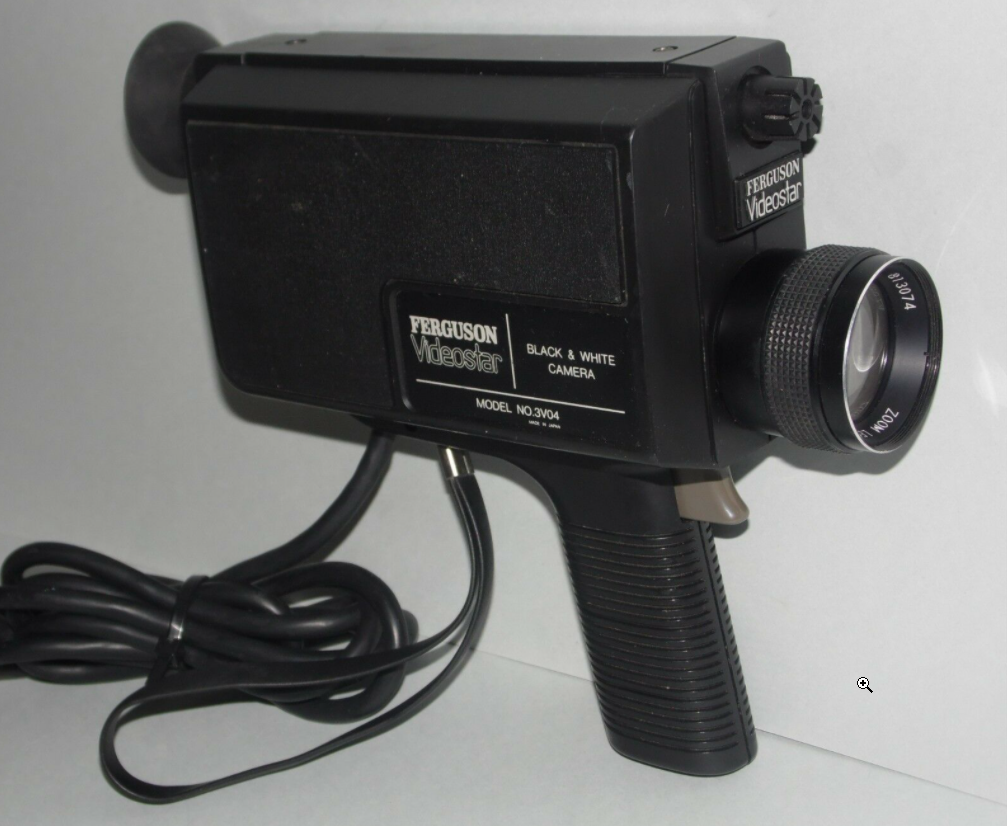
We had the beam on the roof of the building our flat was in in West Kensington and we definitely made some contacts across London. Though other than the contents of our flat (Think “The Young Ones”) we didn’t have very much in the way of interesting video to send.
The Elecraft K2/100
Step forward 20 years and the availability of HF to Class B licence holders like me and I found my interest in the hobby re-kindled a bit. I built my Elecraft K2. Initially just with 10W I then added on the 100W stage. Great fun
In the early noughties I was QRV from Felixstowe on HF.
I joined the Felixstowe and District Amateur Radio Society. http://www.fdars.org.uk/
A good club to join if you are local to the area and interested in radio. They do a lot of training for newcomers to get licensed.
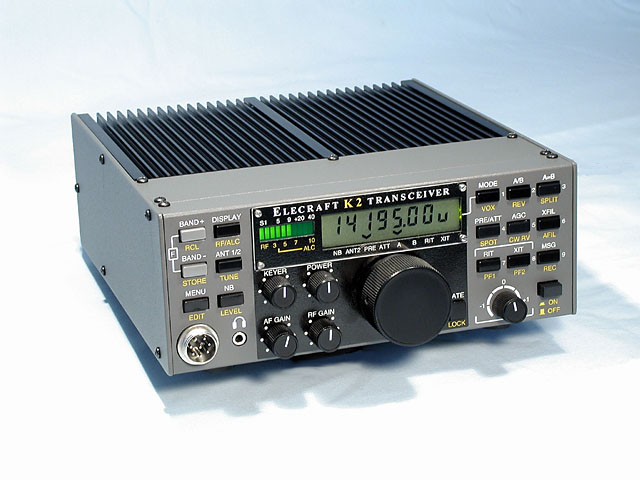
The Icom 575A
I also obtained this 50MHz/28MHz rig secondhand and made some 50MHz contacts using I think an HB9CV antenna for the band that I had mounted on the roof under a 432/144/50MHz vertical.
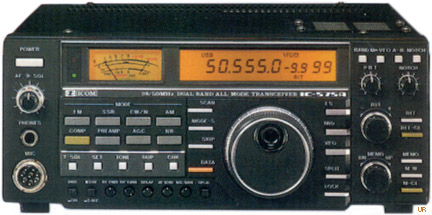
I still have this equipment today and need to get back to using it it as its a very nice piece of equipment.